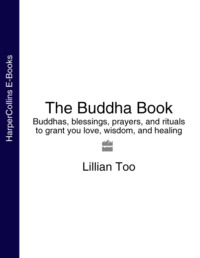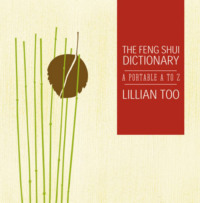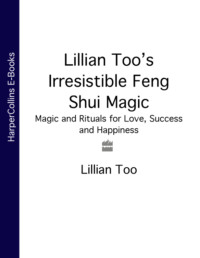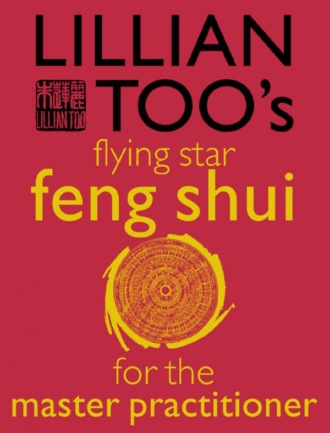
Полная версия
Lillian Too’s Flying Star Feng Shui For The Master Practitioner


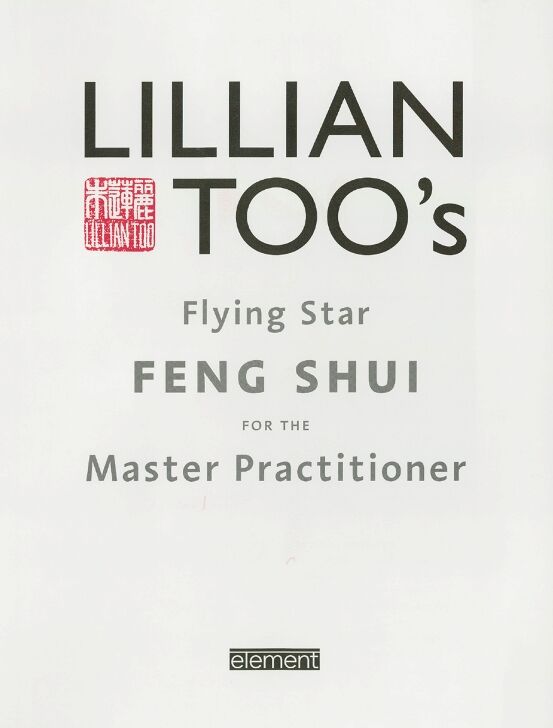
Table of Contents
Title Page
Introduction
Part ONE Secrets of the Luo Pan
1 Origins of the Luo Pan Compass
2 The Feng Shui Luo Pan Today
3 Special Lines of the Luo Pan
4 Heaven, Earth, and Mankind Plates
5 The I Ching – Trigrams and Hexagrams
6 Trigrams and Their Meanings
7 The Two Trigram Arrangements
8 The Yin and Yang Pa Kua
9 The Five Elements and Their Cycles
10 The Lo Shu Square and Ho Tu Numbers
11 Supplementing With A Modern Compass
12 Practical Notes on Taking Directions
13 Determining the Facing Direction - Various Criteria
14 Sitting and Facing Directions
15 Superimposing the Lo Shu Square on Floor Plans
Part TWO The 24 Mountains
16 The 24 Mountains of the Earth Plate
17 Eight Mansions and Personalized Directions
18 The 12 Earthly Branches of the 24 Directions
19 The Four Important Trigrams of the 24 Mountains
20 The Eight Heavenly Stems of the 24 Mountains
21 Axis Directions for East and West Groups
22 The Secret of the Castle Gate Entrance
23 Using the Mankind Plate to Analyze the Impact of Buildings
24 The Heaven Plate to Analyze the Flow of Water
Part THREE Time Changes in Feng Shui
25 Cycles of Time Periods in Feng Shui
26 The Chinese Lunar and Solar Calendars
27 Annual and Month Feng Shui Charts
28 Annual Afflictions and Feng Shui Cures
29 Working With the Grand Duke Tai Tsui
30 Exhausting the Nasty Five Yellow
31 Confronting the Three Killings
Part FOUR Flying Star Feng Shui
32 What Is Flying Star Feng Shui?
33 Trigram Feng Shui and Annual Charts
34 Interpreting Trigram Charts From Year to Year
35 Constructing Flying Star Natal Charts
36 Water Stars and Mountain Stars
37 Period of Seven Charts
Part FIVE Interpreting Flying Star Charts
38 Meanings of the Nine Star Numbers
39 Strength of the Numbers in Different Periods
40 Flying Star Combinations With Enhancers and Cures
41 Nine Palaces of the Home
Part SIX Advanced Work on Flying Star
42 The Auspicious Specials
43 The Unique Situations
44 The Ho Tu Number Combinations
45 Flight of Water and Mountain Stars
46 Eight Mansions and Nine Palaces
47 Special Notes on Placement of Water
48 Tips on Water Placement and Water Flows
Part SEVEN Changing to Period Eight
Appendix Lunar Calendars
Index
Copyright
About the publisher

INTRODUCTION Applying the Secrets of the Feng Shui Compass
THERE ARE MANY SYSTEMS OF FENG SHUI BUT THE EASIEST TO MASTER IS COMPASS FENG SHUI. THIS IS BECAUSE IT IS VERY PRECISE, REQUIRING ACCURACY IN READING THE COMPASS AND IN DEMARCATING THE SPACE BEING FENG SHUIED. COMPASS FENG SHUI TAKES THE GUESSWORK OUT OF FENG SHUI PRACTICE, AND ALL SERIOUS MASTER PRACTITIONERS OF FENG SHUI USE THE FENG SHUI COMPASS, OR LUO PAN, IN THEIR PROFESSIONAL WORK.
The Luo Pan is an invaluable tool. At first glance it is an intimidating instrument – it is filled with as many as 3000 Chinese characters, numbers, lines, and symbolic markings. The Luo Pans used by masters of feng shui are usually at least 9 inches (22cm) in diameter with over 20 concentric rings of numbers, characters, colors, and codes. These contain a wealth of secrets – secrets handed down from master to disciple for hundreds of generations. The Luo Pan contains enough feng shui secrets to fill many books. Today, the bright glare of 21st century attention means that these secrets are available to an ever-growing band of “disciples.”
To those who want to learn how to use the compass to create magnificent good fortune for themselves and their families, the secrets of the Luo Pan are worth learning – especially since on closer examination it is not such a daunting instrument after all.
The Luo Pan, or Chinese feng shui compass, is exactly the same as any western-style compass – it is not a different tool. Both compasses indicate exactly the same directions. The Luo Pan, however, was the ancient masters’ means of condensing all their feng shui knowledge into one instrument. Today, all the information contained in the Luo Pan can be reduced to simple charts and graphics that can be organized and presented in user-friendly formats. Then all you need is a simple western-style compass to get your bearings and your orientations.
This book is, in effect, your Luo Pan. All the information in the Luo Pan pertaining to Yang dwellings (that is houses of the living as opposed to grave sites, or houses of the dead) is explained here in detail and illustrated, where necessary, in easy diagrams. Practical examples are used to explain the more complex applications of the compass but as you turn the pages you will be amazed at how simple supposedly advanced feng shui can be. Do not expect to become a master overnight, however. The formulas of feng shui are easy to understand but if you want your practice to have real depth and potency you should use these formulas as much as possible. Repeated practical application is important in perfecting one’s understanding. Superiority in application comes from experience.
The more you use the formulas the more profound your use of feng shui will become. And then you will begin to appreciate the amazing genius behind this 4000-year-old system of environmental science. You will realize as you start to understand the lines and markings of the Luo Pan that the feng shui masters use it for more than just measuring directions. They use it as an instrument for studying the cosmic flow of chi, or energy, in the environment.
The Luo Pan recognizes that all directions are relative. Directions do not exist without a reference point. All directions – no matter who uses them – can only be expressed in terms of a starting point. Thus the Chinese view the compass as a measure of flowing chi currents around a piece of property or a home. This is the starting point, and from this they use the compass to divide the space around it, so that the chi of every degree of space can then be analyzed. In the Luo Pan, 360 degrees is first divided into eight segments of 45 degrees each. These correspond to the primary and secondary directions – north, south, east, and west, as well as northwest, northeast, southwest, and southeast. These 45-degree segments have their corresponding attributes, elements, colors, numbers, and meanings. Just knowing the meanings of the eight directions enables any amateur feng shui practitioner to benefit greatly from the correct placement of doors, objects, rooms, and so forth.
Much contemporary feng shui practice concentrates on using the meanings of these eight basic compass directions to determine the arrangement of space and the placement of enhancers within the home. In this book we go deeper.
This is because these eight directions can be subdivided again to fine-tune the practice further. The Luo Pan divides each of the eight segments into three sub-segments of directions. This means that instead of having only eight directions, we now have 24 – each covering an angle of 15 degrees. The meanings of the Luo Pan are expressed according to these segments, which are referred to as “the 24 mountains.” Each mountain covers an angle of 15 degrees, and each angle of direction contains a broad range of meanings that define the variables of the most powerful formulas of feng shui.
The study of the 24 mountains is therefore central to the cosmic chi being analyzed. A further refinement of direction takes place when we go deeper. This is because the Luo Pan – and especially the Three Harmony Luo Pan – also takes account of three different bases upon which the direction north (and hence all other directions) can be determined. The Three Harmony Luo Pan recognizes three measurements of north: true north (that indicated by the sundial), magnetic north, and Polaris north. So there are three measurements of north. Each of these measurements is 7.5 degrees apart – with magnetic north in the center – and each is said to be sitting on a parallel “plate.” The Heaven Plate equates with true north, the Earth Plate with magnetic north, and the Mankind Plate with Polaris north.
The feng shui master uses all the formulas of the different plates, and hence the different measurements of north to analyze different aspects of feng shui – whether the analysis is of mountains and rivers, or the influence of time on one’s feng shui. It is because of this that the Luo Pan has so many rings – each set of rings signifies the meanings, formulas, and applications of each plate.
Our task is made easier, however, because most of the formulas for Yang dwellings use the magnetic north of the earth plate, and this is what we will largely focus on in this book. I strongly discourage amateurs from even attempting to practice Yin feng shui. The Luo Pan contains more than enough hugely beneficial information on Yang dwellings to keep one fascinated for a lifetime. It is unnecessary and even foolhardy to dabble with Yin feng shui since this requires practical work in cemeteries and gravesites. Ugh! As I have a natural aversion to cemeteries I have always politely declined any offer to teach me Yin feng shui.
There are different types of Luo Pan
Each type of Luo Pan contains the attributes and variables of different formulas. Thus one type of Luo Pan can be used to study the impact of landforms – such as mountains and rivers or buildings and roads in today’s city environment. Another type of Luo Pan is used to assess the quality of spatial and time dimension feng shui, while a third type combines the different plates of the compass that take account of three types of north. The Luo Pan is a very accurate and subtle instrument in that every angle measured in degrees of direction offers various interpretations and applications. Compass feng shui is based almost exclusively on measuring the luck of directions – both facing directions and sitting directions. Compass feng shui evolved from the trigrams of the I Ching placed round an eight-sided Pa Kua symbol, and it addresses the feng shui of both Yin and Yang abodes. As we are concerned with Yang dwellings, none of the Yin feng shui instruction manuals are included here unless they also apply to Yang abodes.
Today’s environment is different
Application of Compass feng shui in today’s environment should take account of how buildings, roads, towns, and cities have developed and changed over the centuries. The living environment of the 21st century bears no resemblance to that of ancient China whatsoever. So the circumstances and visual appearance of today’s world is not at all the same as when feng shui first developed. The chi was not as complex then as it is today, when we have to contend with the added complications of electricity and telecommunications.
Man-made or man-induced energy flow across the earth has added vastly to the lines of natural energy, so the kind of chi that affects modern homes is very different from that which affected homes and buildings of the past. It is important to bear this in mind when using the secrets of the Luo Pan. We need to be sensitive to the new environment when practicing feng shui – especially the significance of modern structures that may affect the feng shui of abodes near them. Thus satellite dishes, water tanks, transmission lines, multi-level roads – to name but a few modern-day structures – simply must be taken into account since their presence in any environment has strong feng shui implications. The same also applies to neighboring buildings. When the feng shui influence of surrounding structures is analyzed then care can be taken to diffuse any hostile chi emanating from them, while enhancing any benevolent chi they may send. This aspect of compass feng shui uses the Sarn He’ Luo Pan’s mankind plate. Here the formula uses the “man” plate set of 24 mountains and their corresponding elements in order to study the meanings of all nearby buildings, mountains, and structures. This is a very valuable formula which Hong Kong feng shui masters are especially fond of using.
The exciting promise of the Luo Pan
The Luo Pan is the key to unlocking a veritable treasure trove of methods that can be used to bring big transformations in luck. Over the course of this book I will share some of the skills that have been passed on to me. These will help you to read and understand the compass, tell you how to use the formulas for installing cures against bad luck, and how to activate chi to create powerful protective energy for you and your family. Good feng shui always means being protected from premature accidents and death. Good feng shui ensures that your family and all the residents of your household are safe, secure, and stable. Living within the embrace of protective chi helps you avert accidents and overcome life obstacles.
In addition, good feng shui that comes from well-positioned enhancers brings longevity and good health, success without obstacles, wealth, and great relationships. When used in conjunction with basic principles of feng shui, compass formulas add a stunning dimension to this wonderful practice.
Feng shui assessment is always about reading invisible chi patterns that influence a property. These patterns can be felt and determined on site – things like the strength and direction of the winds, as well as the smells and lushness of localized vegetation. But chi is best read by using the compass. In the atmosphere of any place there is always a vibration that one can tune into. The feng shui Luo Pan can often pick up these vibrations. More important than the tool, however, is a mind-set that encompasses earth and sky, land and water, Yin and Yang, productive and destructive forces, and a solid knowledge of formulas and interpretations. It is the practitioner that picks up the vibes of atmosphere and environment, so also trust your own instincts.
The living universe is a multiple blend of a billion permutations. No two houses or properties are ever exactly alike, just as no single abode has constantly good or constantly bad feng shui. The nature of energy is such that it is always changing and evolving. So when using the compass it is always a good idea to take directions again and again. This ensures that the orientations of the land as well as the home are accurately read.
Chi is an elusive force
Chi is not easy to pin down so taking directions can be frustrating when the needle of the compass refuses to settle down. Be patient. Chi is like mercury, hard to grasp. One can study it, analyze it, live with it, embrace it, feed it, trap it, accumulate it – but it is foolhardy to take it for granted. So be patient and take your directions carefully from different angles. The key is to get the orientations of your home accurate and then Compass feng shui will amaze with fabulous and quick results.
There is a depth to feng shui that is very challenging. There are those who use instinct or some special metaphysical capability in their practice of feng shui. Others use assessment of physical shapes and structures to arrange their feng shui. Still others use a combination of different methods – I have seen a multitude of approaches used by different people with varying degrees of success. My perspective on feng shui is derived from the viewpoint of a user. I have used feng shui extensively, broadly, and boldly – in my work, my business, and my personal life – and it has given me the competitive edge. For over 30 years feng shui has been a good and dependable friend – and while I have experimented with different formulas, performed various rituals, and applied Symbolic feng shui in every aspect of my life, underlying all those has been my total reliance on the compass. My approach to feng shui has always been based on the compass.
Formula feng shui
I discovered Formula feng shui very early in my practice and long years of experience have made me very confident in its potency. Formula feng shui has never let me down. But, like everything else, practicing feng shui requires us to make decisions and trade-offs: which formula to use, which room to activate, whose direction to use, where to place the main door, and so forth. It is completely to be expected that one has to confront situations where the different formulas offer different recommendations.
In my experience, Flying Star formulas practiced in conjunction with Symbolic feng shui bring the fastest positive results. It is even better to combine flying star with Eight Mansions feng shui – especially in the arrangement and layout of interiors. In the 21st century many of us really only have control over the interiors of our abodes. Those who have gardens do have some control over their immediate exterior surroundings – but this control is usually limited. Therefore, Flying Star and Eight Mansions feng shui – which use directions and orientations – offer very important means of manipulating the way we interact with the chi of our immediate environment.
Compass Flying Star feng shui evaluates a property from the perspectives of time and time periods, but we must also never forget to use the Sarn He’ landscape formulas as these enable us to analyze the impact of nearby buildings. Eight Mansions feng shui adds the personal dimension and from this formula it is possible to identify directions and sectors that are particularly beneficial or harmful to individuals.
Compass feng shui is very comprehensive
Compass feng shui incorporates the study of numerology (the meanings of numbers and combinations of numbers), the powerful symbolic effect of the five elements, the two Pa Kua arrangements of trigrams, as well as some hitherto very well kept secrets of the feng shui compass itself.
Many feng shui masters acknowledge Compass Flying Star feng shui to be one of the most powerful systems of feng shui that has come down the centuries intact. Because of its potency, and its great reliance on numbers analysis, flying star, like the Luo Pan, can be daunting. In reality, this method of feng shui analysis is not difficult – indeed, as with all of the other schools and principle methods of feng shui, it becomes very easy once you understand the fundamental basis of the formula. Good feng shui works very fast in making your space feel more embracing and more harmonious. Feng shui has the potency to bring an easier life of abundance. But the element of personal effort can never be over stressed. When feng shui brings opportunities you still have to work at making something of those opportunities. Feng shui does ensure there are fewer obstacles in your life. It does bring better, more fulfilling relationships as well, and there are greater successes and higher incomes awaiting your efforts … using the compass methods leaves less room for mistakes because the techniques are specific and precise.
It is worthwhile investing time and effort in learning Compass feng shui because once you know how to use the different methods, you will amaze yourself with how proficient you can become at this ancient way of living in harmony with the environment. Flying Star feng shui takes the guesswork out of feng shui. Eight mansions personalizes your practice. The compass enables you to get the best of feng shui at all times.
You do not need to invest in a Luo Pan – a genuine and authentic Luo Pan is expensive. The charts in this book have all the information and knowledge you require to practice Yang feng shui. What you do need is a good ordinary compass. If you live in seismic area (for example, California) you will need a heavy-duty compass to get accurate readings. Otherwise any compass should be adequate. If you wish, you might find it useful to get a compass with the 24 sub-directions marked in. Armed with the compass, the formulas, and a clear mind, you can start immediately. Good luck!

1. ORIGINS OF THE LUO PAN COMPASS
AN AUTHENTIC CHINESE FENG SHUI LUO PAN IS ONE OF THE MOST BEAUTIFULLY CRAFTED INSTRUMENTS IN THE WORLD. IT IS AN EXTRAORDINARILY PRECISE COMPASS THAT CONTAINS A TREASURE TROVE OF FENG SHUI FORMULAS AND SECRETS. THESE ENABLE THE SERIOUS PRACTITIONER TO TAKE PRECISE READINGS OF THE ORIENTATION OF ANY BUILDING OR PROPERTY AND, IF THEY KNOW HOW TO READ AND INTERPRET THE MARKINGS, OFFER INSTANT DIAGNOSIS AND SOLUTIONS.
Feng shui afflictions take different forms under a whole melange of circumstances and orientations. These afflictions can be caused by physical structures within the vicinity of the landscape, the orientation of the building’s doors and entrances, or simply the energy changes of time. All these and more can be decoded from the information contained within the Luo Pan. The markings on the Luo Pan give immediate correlations of every degree of orientation thereby pinpointing to the user under which method or formula there might be a feng shui problem.
How did the Luo Pan originate?
A colorful Chinese legend tells of a beautiful Goddess, known as the Lady of the Nine Heavens, who gave the Luo Pan compass to the Yellow Emperor and revealed to him the secret knowledge of how to use this special tool. Using the Luo Pan, the Yellow Emperor succeeded in defeating his enemies. In the ensuing centuries the compass device was progressively enhanced by the Duke of Chou, his son King Wen, and his grandson. The knowledge of the compass was combined with that of the Book of Changes, the I Ching, and, in the process, concepts of worldly and divine clairvoyance were established. Thus was formulated what would eventually become the fundamental underpinnings of the science of feng shui, a combination of all the knowledge of heaven and earth. As a tool, the Luo Pan was used in unison with the I Ching, which had by then been condensed into the eight-sided symbol called the Pa Kua.




